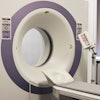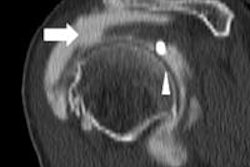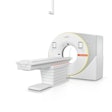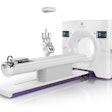Dear CT Insider,
As researchers begin to screen for lung cancer on a broader scale, they're on the lookout for CT findings that suggest a nodule could be malignant or benign, in hopes of avoiding invasive workup of suspicious nodules whenever possible. Along the way they're encountering some surprises -- recently, for example, regarding the role of chronic obstructive pulmonary disease (COPD) and other lung diseases in the development of malignancy.
An analysis of data from the National Lung Screening Trial found that some forms of COPD are associated with malignancy in CT-detected nodules, while other types are not. Learn which findings conferred a higher risk of malignancy in our Insider Exclusive.
While screening for lung cancer, it also makes sense to assess for coronary artery disease, considering that heart disease kills more smokers than lung cancer. But how can coronary artery assessment be done efficiently in a screening setting when time limitations are paramount?
With automated coronary artery calcium (CAC) scoring, according to one group. The researchers applied an automated CAC scoring algorithm originally designed for a European trial to a lung cancer screening study in North America. See what they found by clicking here.
In lung cancer management, researchers from California and Pennsylvania found that perfusion CT benefited mightily from the use of motion correction, which more accurately estimated the size of tumors post-treatment than standard perfusion CT. Find out more here.
In shoulder imaging, the increasing use of metallic screws and fixation devices is making CT a more practical option than MRI, according to investigators from Florida. Sure, such screws and devices are MRI-compatible, but they all cause a degree of metallic artifact, which can degrade the images, the researchers said. Get the rest of the story here.
In colorectal cancer screening, a new study in the Journal of the National Cancer Institute pitted CT colonography -- with both full and limited prep -- against conventional colonoscopy and the fecal immunochemical test. The surprising findings go to the heart of why advocates of CT colonography believe the radiology exam is by far the best option for screening. Find out more by clicking here.
Finally, as evidence mounts that coronary CT angiography is a reliable way to test for coronary artery disease, a new study shows that the use of cardiac imaging for suspected coronary disease is actually falling, in part due to a broader slowdown in imaging utilization. But there's at least one area where CT utilization is still rising steadily. Find out where here.
We invite you to scroll through the links below for more news about radiology's biggest modality -- all right here in your CT Community.



















